
-
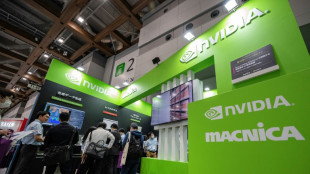 Japan ramps up tech ambitions with $65 bn for AI, chips
Japan ramps up tech ambitions with $65 bn for AI, chips
-
Taliban govt clearing 'un-Islamic' books from Afghanistan shelves

-
 Asian markets struggle as traders weigh geopolitical tensions
Asian markets struggle as traders weigh geopolitical tensions
-
Iraq holds its first census in nearly 40 years

-
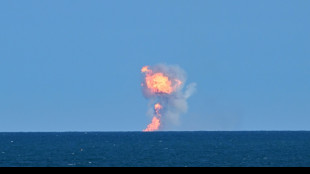 SpaceX fails to repeat Starship booster catch, as Trump watches on
SpaceX fails to repeat Starship booster catch, as Trump watches on
-
European powers, US seek to censure Iran at UN nuclear watchdog board

-
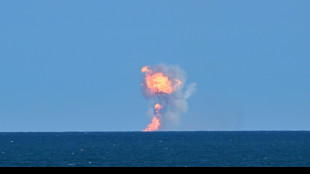 SpaceX fails to repeat Starship booster catch, as Trump looks on
SpaceX fails to repeat Starship booster catch, as Trump looks on
-
European stocks fall on Ukraine-Russia fears, US focused on earnings

-
 Trump names China hawk Howard Lutnick commerce secretary
Trump names China hawk Howard Lutnick commerce secretary
-
SpaceX set for Starship's next flight -- with Trump watching
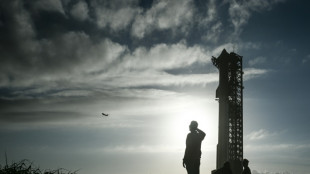
-
 Top-selling daily French daily Ouest-France stops posting on X
Top-selling daily French daily Ouest-France stops posting on X
-
Russian invasion toll on environment $71 billion, Ukraine says

-
 New Botswana leader eyes cannabis, sunshine to lift economy
New Botswana leader eyes cannabis, sunshine to lift economy
-
China's Xi urges 'strategic' ties in talks with Germany's Scholz

-
 COP29 negotiators strive for deal after G20 'marching orders'
COP29 negotiators strive for deal after G20 'marching orders'
-
Walmart lifts full-year forecast after strong Q3

-
 Son of Norwegian princess arrested on suspicion of rape
Son of Norwegian princess arrested on suspicion of rape
-
US lawmaker accuses Azerbaijan in near 'assault' at COP29

-
 Spain royals to visit flood epicentre after chaotic trip: media
Spain royals to visit flood epicentre after chaotic trip: media
-
French farmers step up protests against EU-Mercosur deal

-
 Burst dike leaves Filipino farmers under water
Burst dike leaves Filipino farmers under water
-
Markets rally after US bounce as Nvidia comes into focus

-
 Crisis-hit Thyssenkrupp books another hefty annual loss
Crisis-hit Thyssenkrupp books another hefty annual loss
-
Farmers descend on London to overturn inheritance tax change

-
 Floods strike thousands of houses in northern Philippines
Floods strike thousands of houses in northern Philippines
-
SpaceX set for Starship's next flight, Trump expected to attend
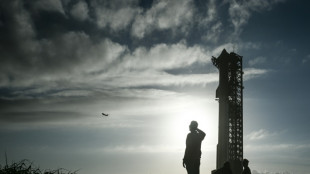
-
 Several children injured in car crash at central China school
Several children injured in car crash at central China school
-
Urban mosquito sparks malaria surge in East Africa

-
 Many children injured after car crashes at central China school: state media
Many children injured after car crashes at central China school: state media
-
Asian markets rally after US bounce as Nvidia comes into focus

-
 Tens of thousands march in New Zealand Maori rights protest
Tens of thousands march in New Zealand Maori rights protest
-
Five takeaways from the G20 summit in Rio

-
 Parts of Great Barrier Reef suffer highest coral mortality on record
Parts of Great Barrier Reef suffer highest coral mortality on record
-
Defiant Lebanese harvest olives in the shadow of war

-
 Divided G20 fails to agree on climate, Ukraine
Divided G20 fails to agree on climate, Ukraine
-
Can the Trump-Musk 'bromance' last?

-
 US to call for Google to sell Chrome browser: report
US to call for Google to sell Chrome browser: report
-
Trump expected to attend next Starship rocket launch: reports

-
 Stocks, dollar hesitant as traders brace for Nvidia earnings
Stocks, dollar hesitant as traders brace for Nvidia earnings
-
Biden in 'historic' pledge for poor nations ahead of Trump return

-
 Tropical storm Sara kills four in Honduras and Nicaragua
Tropical storm Sara kills four in Honduras and Nicaragua
-
Spanish resort to ban new holiday flats in 43 neighbourhoods

-
 Phone documentary details Afghan women's struggle under Taliban govt
Phone documentary details Afghan women's struggle under Taliban govt
-
G20 wrestles with wars, 'turbulence' in run-up to Trump

-
 Stocks, dollar hesitant as traders eye US rate outlook, Nvidia
Stocks, dollar hesitant as traders eye US rate outlook, Nvidia
-
G20 wrestles with wars, climate in run-up to Trump

-
 G20 host Brazil launches alliance to end 'scourge' of hunger
G20 host Brazil launches alliance to end 'scourge' of hunger
-
Stocks, dollar hesitant as traders scale back US rate cut bets

-
 Trump confirms plan to use military for mass deportation
Trump confirms plan to use military for mass deportation
-
UN climate chief at deadlocked COP29: 'Cut the theatrics'


Airbus and Boeing supremacy secure despite turbulence
Boeing's safety troubles and the Airbus scramble to ramp up production should have left a gap for smaller rivals to challenge their dominatiion of the commercial airliner market.
Yet the American and European giants face little near term threat to their lock on the medium and long-range aircraft markets, industry experts say, as the barriers to entry are too high for China's COMAC or Brazil's Embraer.
COMAC did not bother to bring its new C919, its first entry into the key single-aisle medium-range aircraft segment, to this week's Farnborough airshow, Europe's top aviation industry gathering.
Airbus and Boeing meanwhile added more than 260 planes to their massive order books of nearly 15,000 aircraft.
This despite the fact that an airline that orders a medium-range Airbus A320 or Boeing 737 MAX today will likely have to wait until the end of the decade to receive the plane. Both companies face supply chain and other problems that have hampered efforts to step up production.
In the coming two decades airlines are estimated to need 42,000 new aircraft to rejuvenate their fleets with models that guzzle less fuel and emit less CO2, as well as to meet an expected doubling of global air traffic.
"A significant narrow-bodies deficit remains through 2028 for the A320 family and longer for the 737 MAX," said Richard Evans, an analyst at aviation sector data firm Cirium.
Narrow-body or single-aisle aircraft are the workhorses of the commercial aviation industry, each carrying between 175 and 250 passengers on medium-range flights.
Despite the opening in the most popular commercial aircraft segment, it will not be easy for COMAC or Embraer to profit from the opportunity.
- Certification hurdle for COMAC -
COMAC's C919 has begun commercial flights in China. A state-owned firm, COMAC has nearly 1,200 orders for the jet, almost exclusively from Chinese airlines.
Beijing wanted the plane to reduce China's reliance on foreign technology and to gain a foothold in the global aircraft market. However, the plane has to date only been certified for use in China and production remains low-scale.
Without certification from the Federal Aviatioin Authority in the United States and the European Union Aviation Safety Agency (EASA) the two major markets remain closed to the C919.
"Chinese airlines are the target market for the C919," said Pascal Fabre, an aerospace industry expert at AlixPartners consultancy.
He said there are too many barriers, including political, for major Western airlines to add it to their fleet.
COMAC sent a C919 to the Singapore airshow in February. The firm's small stand at Farnborough featured only small models of the jet.
Airbus and Boeing still expect COMAC to become a rival.
"We do take COMAC as a serious competitor," said Christian Scherer, who heads Airbus's commercial aircraft division.
But not immediately, as they believe the C919 does not offer airlines anything new compared with Airbus and Boeing aircraft.
"There is no differentiation, there's no new value being brought to the market, which tells you that COMAC is really still trying to accede to a market that remains largely influenced by Airbus and Boeing," he added.
The development of the technologies for the next generation of aircraft, which Airbus and Boeing have a lead on, are "big barriers to entry", said Scherer.
- Huge development costs -
Brazil's Embraer is already an established player in the market for smaller, regional aircraft.
For Fabre at AlixPartners, Embraer has the technical know-how to develop a medium-range plane that could compete with Airbus and Boeing.
The problem is money.
"The market capitalisation of the company is around five billion dollars. The development of a new commercial airliner, even for Embraer, is at least that level, so they need partnerships," said Fabre.
The risk of a company overstretching itself with the development of an aircraft is real.
Canada's Bombardier developed its C-Series aircraft to occupy the space between small regional aircraft and the Airbus A320 and Boeing 737 planes. It entered service in 2016 but the company could not cope with financial pressure and was split apart, with Airbus acquiring the plane which it rebaptised the A220.
Embraer, which produces the E2 that is just smaller than the A220, held talks with Boeing to sell its commercial aircraft business but the US company withdrew in 2020 during the Covid pandemic.
Since then Embraer has preferred to improve its existing aircraft.
"It takes seven, eight years to launch an aircraft. And we have to manage this technology transition" towards more sustainable fuels, the company's chief executive Gomes Neto recently told the trade magazine Aviation Week.
"We don't want to put the company at risk."
A.Zimmermann--CPN
